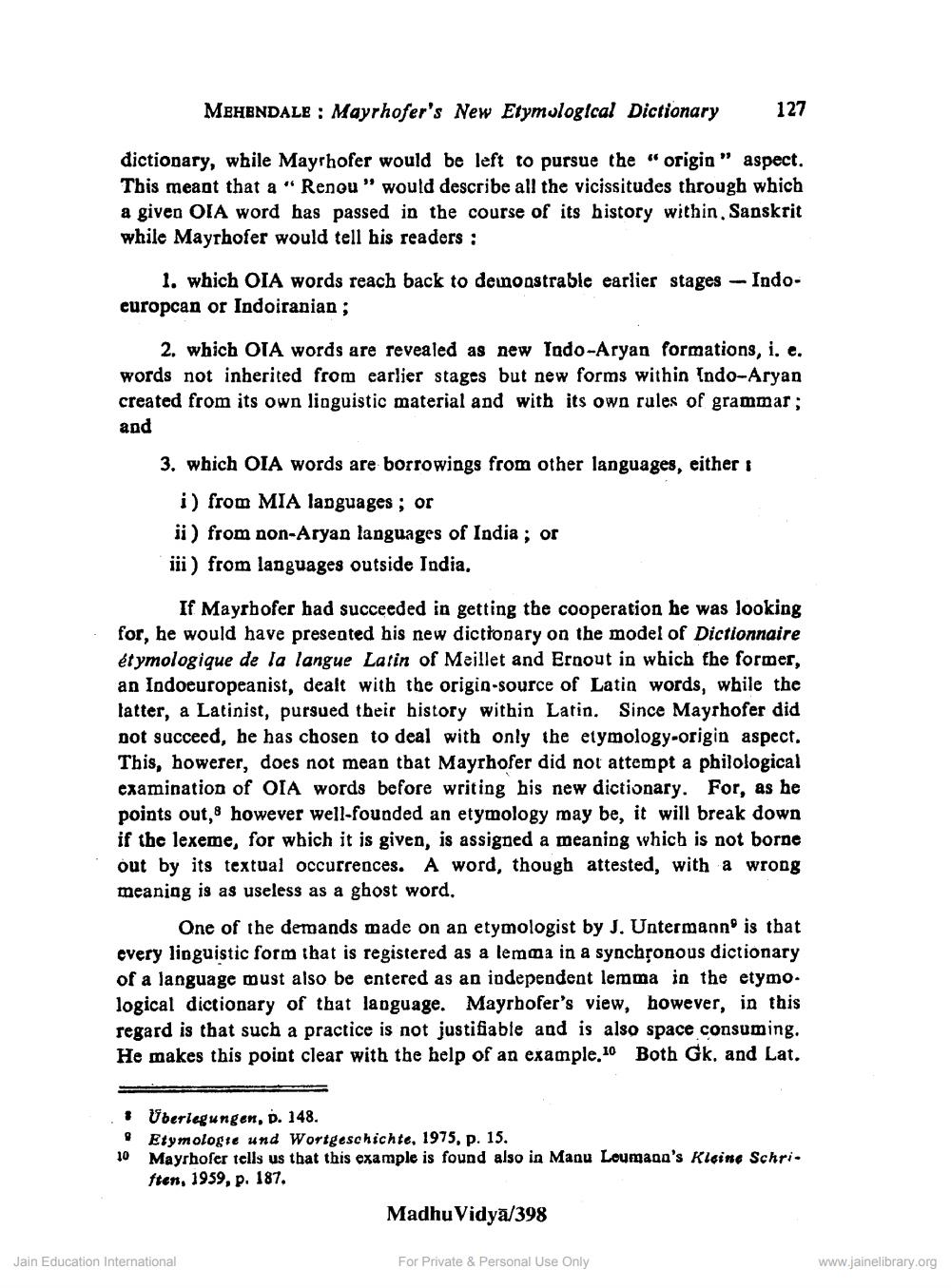________________
MEHBNDALE : Mayrhofer's New Etymological Dictionary
127
dictionary, while Mayrhofer would be left to pursue the "origin" aspect. This meant that a "Renou " would describe all the vicissitudes through which a given OIA word has passed in the course of its history within. Sanskrit while Mayrhofer would tell his readers :
1. which OIA words reach back to deinoastrable earlier stages - Indoeuropcan or Indoiranian ;
2. which OTA words are revealed as new lado-Aryan formations, i. e. words not inherited from earlier stages but new forms within Indo-Aryan created from its own linguistic material and with its own rules of grammar; and
3. which OIA words are borrowings from other languages, either
i) from MIA languages; or ii) from non-Aryan languages of India; or iii) from languages outside India.
If Mayrbofer had succeeded in getting the cooperation he was looking for, he would have presented his new dictionary on the model of Dictionnaire étymologique de la langue Latin of Meillet and Ernout in which the former, an Indoeuropeanist, dealt with the origin-source of Latin words, while the latter, a Latinist, pursued their history within Latin. Since Mayrhofer did pot succeed, he has chosen to deal with only the etymology-origin aspect. This, howerer, does not mean that Mayrhofer did not attempt a philological examination of OIA words before writing his new dictionary. For, as he points out, however well-founded an etymology may be, it will break down if the lexeme, for which it is given, is assigned a meaning which is not borne out by its textual occurrences. A word, though attested, with a wrong meaning is as useless as a ghost word.
One of the demands made on an etymologist by J. Untermann is that every linguistic form that is registered as a lemma in a synchronous dictionary of a language must also be entered as an independent lemma in the etymo. logical dictionary of that language. Mayrhofer's view, however, in this regard is that such a practice is not justifiable and is also space consuming. He makes this point clear with the help of an example.16 Both Gk, and Lat.
Uberlegungen, D. 148. Etymologie und Wortgeschichte, 1975, p. 15. Mayrhofer tells us that this example is found also in Manu Loumana's Kleine Schri. ften, 1959, p. 187.
10
Madhu Vidyā/398
Jain Education International
For Private & Personal Use Only
www.jainelibrary.org




